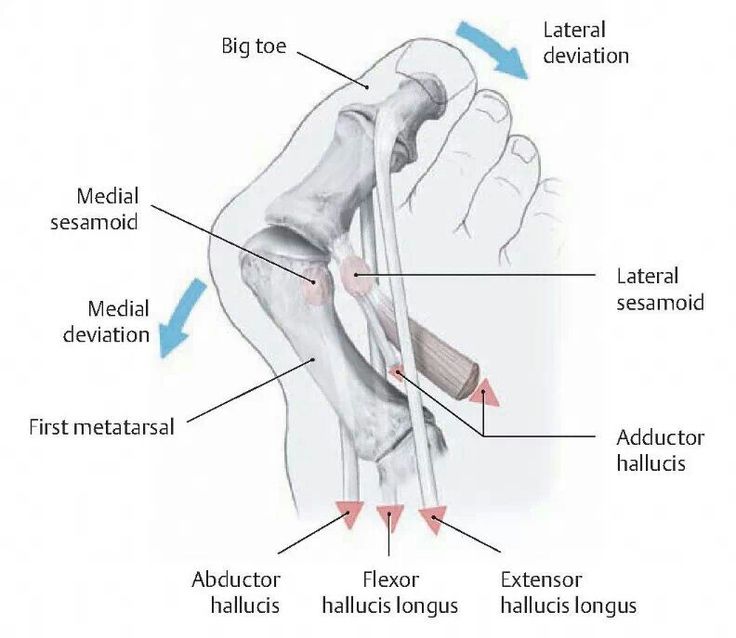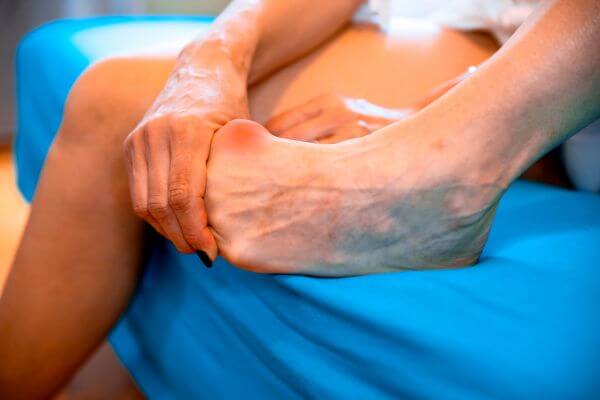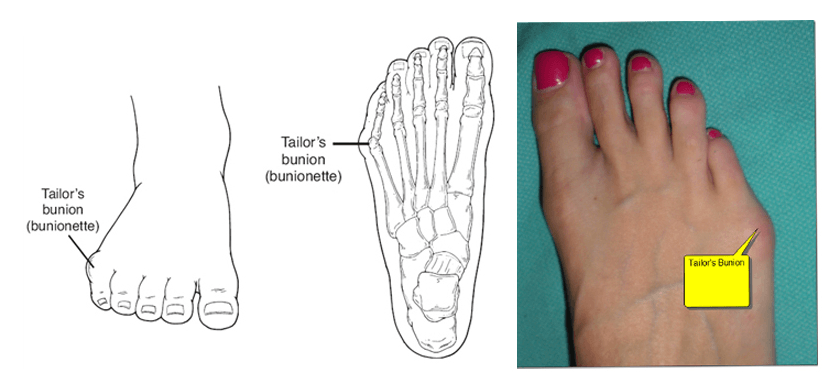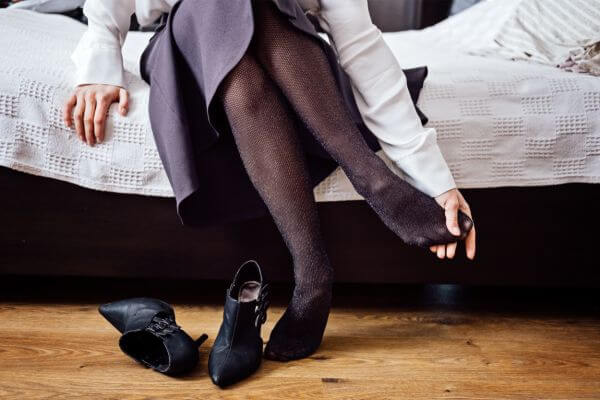Bunions (Hallux Valgus)
Bunions
At Ankle Foot and Orthotic Clinic, we understand that bunions and bunionettes can cause significant discomfort and affect your daily activities. Whether you’re dealing with the pain of a bunion at the base of your big toe or a bunionette on your little toe, we offer personalised care to help improve your foot health.

What is a Bunion?
Hallux Valgus is the scientific name for a bunion, which refers to a condition in which the big toe is angled towards the second toe.
There are different stages of a bunion which are shown below:
A – Grade 1 (no deformity)
B – grade 2 (mild deformity)
C – grade 3 (moderate deformity)
D – grade 4 (severe deformity)

What Causes a Bunion
Genetics
Hypermobile joints
If there is hypermobility the great toe the joint will not be as stable. This is problematic as the long muscles that move the toe can cause the great toe to deviate
Biomechanical abnormalities
Having a flat foot may exaggerate the force that causes the great toe to deviate medially
Tight ill fitting shoes
Shoes that put pressure on the inside of the joint if worn for a prolonged period of time can result in the increased risk of a bunion
Certain medical conditions
Rheumatoid arthritis and other connective tissue disorders can result in the formation of a bunion

Treatment of a Bunion
Conservative options have been reported across the literature with mixed results. Once the toe has started to deviate there are NO conservative options to fix the deviation that has occurred.
There are some treatment options suggested to reduce the progression of a bunion (although these have not been rigorously investigated) some proposed treatment options include:
Wider fitting shoes with a more supportive sole
Correcting the alignment of the foot
It has been suggested that having a flat foot may increase the progression of a bunion (minimal evidence) and therefore correcting the alignment of the foot may reduce the progression of the bunion (minimal evidence)
Wearing bunion splints
These may help while wearing the brace but the toe will return to normal when not wearing the brace.
Complications of a Bunion
Pain
Difficulty finding footwear
Pressure ulcers
Arthritis

When do I need surgery for my Bunion?
Surgery is generally considered a last resort for a bunion. Typically, surgery is reserved for people with painful bunions or when the bunion deformity is negatively impacting on your life or is causing chronic problems such as wounds or secondary complications such as lesser toe pathology or metatarsalgia.
The risks and benefits should be thoroughly considered before having any operation for a bunion.
What is a Bunionette (Tailors Bunion)?
A bunionette otherwise known as a tailor’s bunion, is an abnormal bony protuberance, or bump, on the outer side of the fifth toe or metatarsophalangeal joint (MTPJ).
This problem can start out as small and painless, but can become larger and painful.


Causes of a Bunionette
The cause of a bunionette is unknown. Certain factors are though to increase the risk for the development of bunionette including:
Genetics
Non- Supportive footwear
High arched feet
Trauma
Treatment of a Bunionette
Choosing a shoe with a wider toe box
Footwear Stretching
Offloading the area with padding
Diagnosis of a Bunionette

Book an Appointment
The Foot and Ankle Centre’s Northcote Podiatrists can help you with all lower limb complaints, including Bunions and Bunionettes. Make an appointment to get your foot and ankle pain under control.
Professional, experienced Podiatrists for the treatment of a Bunion servicing the areas of Northcote, Thornbury, Fitzroy, North Fitzroy, Carlton, North Carlton, Alphington, Fairfield, Brunswick, Coburg and Preston.